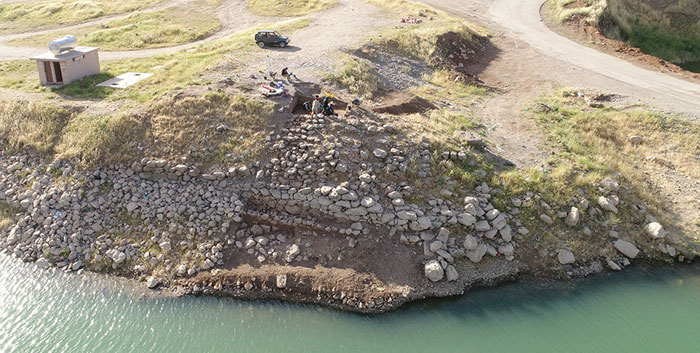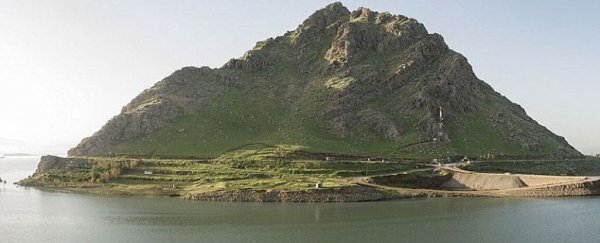An ancient city thought to have been founded in the era of Alexander the Great has been discovered after being lost in the sands of history for over 2,000 years.
Qalatga Darband, which overlooks a river in the Sulaimaniya province of Iraqi Kurdistan, bears the traces of an ancient fortified settlement, and now archaeologists have finally stepped foot in this long-hidden area.
Although we don't have a proper date from the researchers yet, the settlement is thought to have been around after Alexander the Great marched into battle against the Persian king Darius III in what was then called Mesopotamia.
Overthrowing empires is thirsty work, and Qalatga Darband – which roughly translates in Kurdish as "castle of the mountain pass" – could once have been home to a busy wine trade for soldiers and merchants toiling on the road to glory.
"It's early days, but we think it would have been a bustling city on a road from Iraq to Iran," archaeologist John MacGinnis from the British Museum told The Times.
"You can imagine people supplying wine to soldiers passing through."
 British Museum
British Museum
MacGinnis and his team are in charge of the Iraq Emergency Heritage Management Training Scheme, training Iraqi researchers how to identify and rescue irreplaceable archaeological treasures from the threat of destruction by Islamic State.
Amazingly enough, the Qalatga Darband discoveries were borne out of warfare too – albeit from a far different era of human conflict.
Satellite spy photography captured in the 1960s by the US during the Cold War as part of the Corona program ended up being declassified in the 1990s, which helped researchers identify the outline of suspected ancient remains from the air.
War in the region prevented archaeologists from taking a closer look until the 21st century, with researchers using drones to survey the landscape, indicating subtle variations in the crop growth that now covers the ancient city.
"The drone yielded excellent information," MacGinnis told The Times.
"[A]nalysing crop marks hasn't been done at all in Mesopotamian archaeology. Where there are walls underground, the wheat and barley don't grow so well, so there are colour differences in the crop growth."
Investigations on the ground have so far revealed the foundations of a number of large buildings in the ground, including a fortified wall and stone presses that may have been used in wine or oil production.
Roof tiles and statues have also been discovered, with figures thought to depict Persephone and Adonis found at the site.
So far it's unclear exactly when these relics date from – as the research is ongoing – but the team thinks the finds could hail from the first or second centuries BC.
A coin discovered in the city shows the Parthian king Orodes II, who ruled between 57 BC to 37 BC, so it's likely the city was still in use long after the time of Alexander, and may have been most substantially founded after his own war band passed through the region.
The dig is expected to continue until 2020, so there's a good chance we'll find out a lot more about this lost city from another age, and solve some of its outstanding mysteries.
